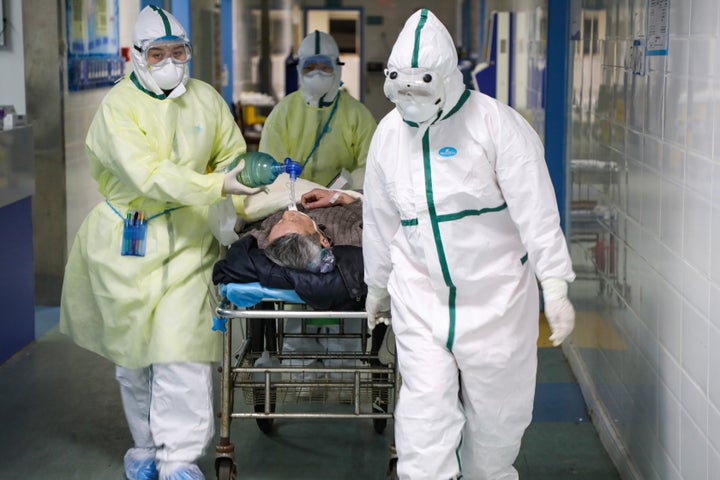President Donald Trump said Monday that he expected the coronavirus epidemic to disappear with the end of winter ― a remark at odds with warnings from infectious disease experts.
Trump’s comments on the virus known as 2019-nCoV, which has infected more than 42,000 people globally and claimed more than 1,000 lives, came during a White House business session with state governors.
“A lot of people think that goes away in April as the heat comes in,” Trump said of the outbreak that began in the Chinese city of Wuhan. “Typically that will go away in April. We’re in great shape though. We have 12 cases, 11 cases, and many of them are in good shape.”
The Centers for Disease Control and Prevention has confirmed 13 coronavirus infections in the U.S. and said tests are pending on at least 68 other potential cases. The last confirmed American case was Feb. 5 in Wisconsin, officials said.
The president’s remarks set off some concern that he didn’t have a solid understanding of the threat at hand.
“This statement minimizes the many critical factors needed for the containment of the outbreak and the prevention of further disease spread, such as adequate infection control measures and contact tracing,” Dr. Britta Lassmann, program director for the International Society for Infectious Diseases, told HuffPost.
“Data on the role of temperature and climate on the transmissibility of 2019-nCoV are currently lacking,” Lassmann added.

Trump’s suggestion that the coronavirus outbreak will subside with the onset of warmer temperatures in the Northern Hemisphere is likely based on general trends with viral infections: They often thrive in the colder months because people are spending more time indoors in close proximity to others and because lower humidity in winter allows a virus to remain in the air for longer periods of time.
But Trump’s rosy outlook is also risky because not all outbreaks subside as the weather warms, and this one remains mysterious on several fronts. So far, there’s no vaccine and no conclusions on how it spreads, how to cure it or how long it takes for an infected person to show symptoms. It’s already surpassed milestones set by other disease outbreaks, including the death toll of the SARS outbreak 17 years ago. This week, for the first time, the daily death toll in China has topped 100.
“Although some coronavirus infections are seasonal, only time will tell if the 2019 novel coronavirus will behave this way. Some coronavirus species have peaks in the winter and summer,” said Dr. Tom Frieden, former director of the CDC and now president and CEO of Resolve to Save Lives, an initiative focused on preventing epidemics.
Weather’s impact on a disease’s spread, Frieden added, can vary by climate.
“If nCov behaves as influenza behaves, the seasonality seen in temporal climates may not mean seasonality in tropical climates, where influenza can circulate at high levels all year long,” Frieden explained.
Dr. William Schaffner, a professor of preventive medicine at Vanderbilt University Medical Center, has also warned about this virus’s unpredictability. Before Trump even made his comments, Schaffner cautioned against relying on the expectation that new infections will slow with spring.
“Could it be that the change of seasons has an impact on the virus? Lord knows, we hope so,” he told USA Today last week. “It happens with human coronaviruses, we know that. But this is a rogue virus.”

